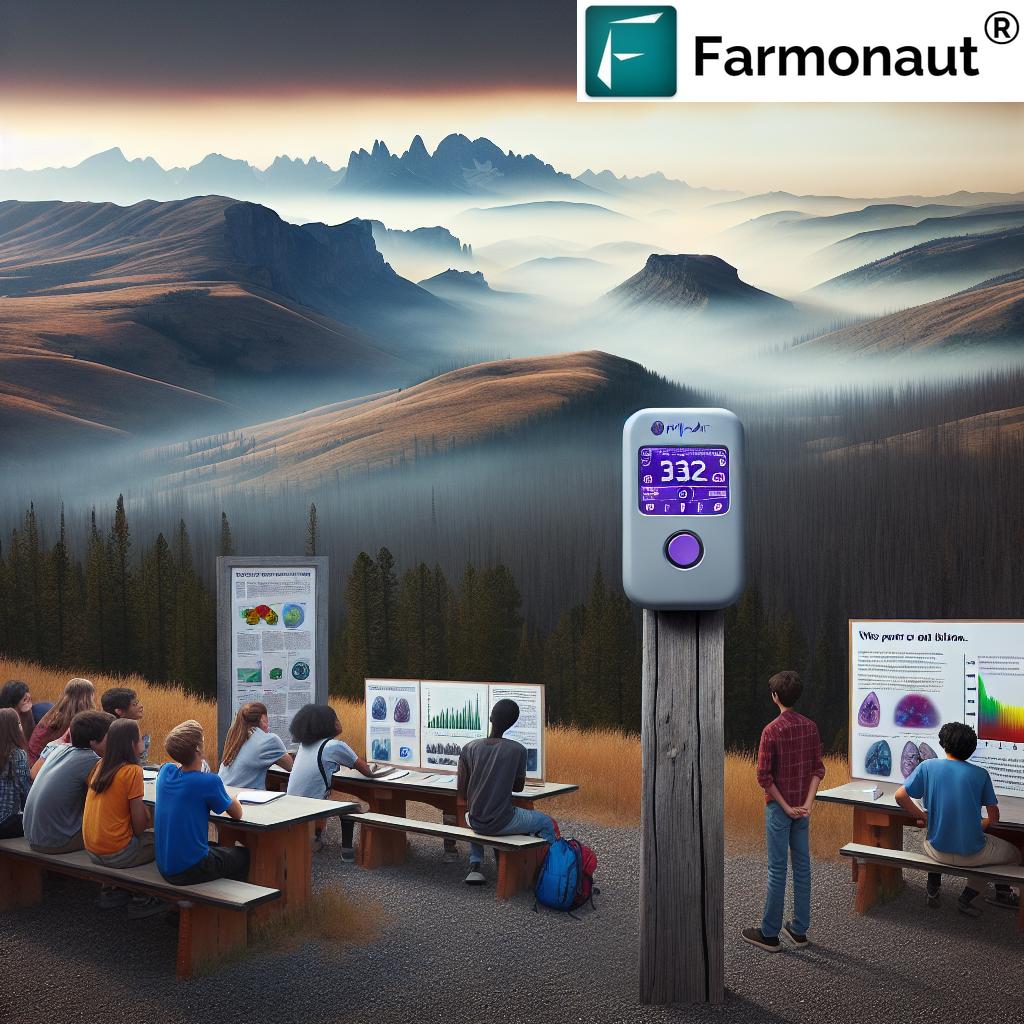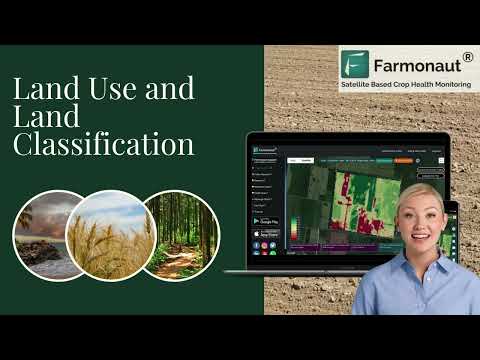Montana’s Air Quality Revolution: How Real-Time Monitoring Combats Wildfire Smoke Exposure
“Montana’s PurpleAir network spans the entire Flathead Reservation, collecting real-time air quality data to combat wildfire smoke exposure.”
“Montana’s air quality initiative involves collaboration between universities, tribes, and environmental agencies, creating a comprehensive statewide monitoring system.”

In the heart of the American West, Montana is embarking on a groundbreaking journey to revolutionize its approach to air quality monitoring and public health protection. As wildfires become increasingly frequent and intense due to climate change, the Treasure State is taking proactive steps to combat the growing threat of smoke exposure. We’re witnessing a remarkable collaboration between universities, tribes, and environmental agencies that’s setting a new standard for air quality management across the Western United States.
The Birth of a Comprehensive Air Quality Monitoring Network
At the forefront of this initiative is the establishment of a comprehensive PurpleAir network across the Flathead Reservation. This pioneering effort is the result of a unique partnership between the University of Montana’s Montana Climate Office and the Confederated Salish and Kootenai Tribes (CSKT). Together, they’re installing a network of affordable PurpleAir monitors that collect real-time air quality data, providing vital information to local communities about their environmental conditions.
- Real-time data collection on air quality
- Comparison with national air quality standards
- Empowering communities with local air quality information
Kyle Bocinsky, the director of climate extension at the Montana Climate Office, emphasizes the importance of respecting tribal sovereignty in this collaborative effort. “When you’re partnering with tribes, it’s important to understand what you can help provide while still honoring tribal sovereignty,” he states. “By working closely with the CSKT Climate Program and the Salish Kootenai College Extension office, we have ensured that CSKT maintains agency over their environmental monitoring.”
Bridging Science and Community: The Role of Schools
One of the most inspiring aspects of Montana’s air quality revolution is the central role that schools are playing in the initiative. Across the Flathead Reservation, students and teachers are leading the charge in air quality awareness and improvement campaigns. This engagement not only provides valuable data for the monitoring network but also educates the next generation about the importance of environmental stewardship.
Bonnie White, a math and science teacher at Arlee High School, shares an inspiring example of student-led change. “The PurpleAir data transcends math and science classes,” she explains. “It allows the students to dive in, see what’s happening in real-time, and learn as they go. It’s pretty rewarding to make connections that can lead to solutions for your community.”
At Arlee High School, students used their PurpleAir monitor to track PM2.5 particles emitted by the school’s coal-burning furnace. Armed with this data, they successfully petitioned the school board for an updated heating system, leading to the installation of an all-electric system in 2018. This real-world application of environmental monitoring demonstrates the power of putting data into the hands of engaged community members.
The CSKT Climate Change Strategic Plan: A Model for Tribal Climate Adaptation
The air quality sensor network is just one component of a larger initiative by the Confederated Salish and Kootenai Tribes known as the Climate Change Strategic Plan. This groundbreaking program is one of the first tribal initiatives in the United States to create a comprehensive framework for community climate change adaptation.
Key sectors addressed in the CSKT Climate Change Strategic Plan:
- Air quality
- Water resources
- Forestry management
- Wildlife conservation
- Land use planning
- Fisheries protection
- Cultural preservation
- Infrastructure resilience
- Human health and well-being
Mike Durglo, the CSKT Climate Program director, leads this innovative plan. “Implementation is where the real work starts,” he notes, highlighting the tribe’s commitment to turning strategy into action. The plan, first completed in 2013, is continuously updated to incorporate more tribal knowledge and adapt to changing environmental conditions.

Expanding the Network: From Reservation to Statewide Initiative
The success of the Flathead Reservation’s air quality monitoring network has caught the attention of environmental agencies across Montana. The Montana Department of Environmental Quality is now working to expand this model statewide, creating a comprehensive air quality monitoring system that will benefit all Montanans.
This expansion is crucial, as Montana ranks in the top four states in the U.S. for smoke exposure and has the second-highest number of households that use wood-burning stoves for heat. This combination creates two distinct seasons of smoke pollution – wildfire summers and wood-burning winters – putting residents at a higher risk for PM2.5 inhalation.
To learn more about innovative agricultural technologies that can complement environmental monitoring efforts, check out Farmonaut’s API and API Developer Docs.
Research and Health Implications
The real-time data collected by the PurpleAir network is proving invaluable to health researchers across Montana. At the University of Montana, a team led by Erin Landguth in the College of Public Health is using this data to understand the long and short-term impacts of PM2.5 exposure. Their research integrates climatic, environmental, and socioeconomic factors to deduce which elements contribute to adverse health consequences.
One of the unique challenges in studying wildfire smoke exposure is the lack of research treating it as an independent source of toxicity. With the new statewide air monitoring network in place, consistent, real-time data will help health professionals understand what frequent, and at times extremely high, smoke exposure means for the human body.
Community Engagement and Public Health Outcomes
The PurpleAir network is more than just a data collection tool; it’s a catalyst for community engagement and public health improvement. By providing real-time, easily accessible air quality information, the network empowers individuals and communities to make informed decisions about their health and activities during periods of poor air quality.
Local health departments and schools are using this data to implement air quality action plans, such as:
- Issuing air quality alerts
- Adjusting outdoor activity schedules
- Implementing indoor air filtration measures
- Educating the public on proper use of air purifiers and masks
These proactive measures are helping to reduce the health impacts of wildfire smoke exposure, particularly among vulnerable populations such as children, the elderly, and those with pre-existing respiratory conditions.
Interested in agricultural technology that can help farmers adapt to changing environmental conditions? Check out Farmonaut’s mobile apps:
The Future of Air Quality Monitoring in Montana
As Montana continues to expand its air quality monitoring network, the state is poised to become a leader in community-based environmental health initiatives. The collaboration between universities, tribes, and state agencies serves as a model for other Western states grappling with the increasing threat of wildfires and their impact on public health.
Looking ahead, Montana’s air quality revolution has the potential to:
- Improve public health outcomes related to air pollution
- Enhance climate change adaptation strategies
- Foster greater collaboration between diverse stakeholders
- Drive innovation in environmental monitoring technologies
- Inform policy decisions on wildfire management and air quality regulations
Air Quality Index (AQI) Comparison Across Montana Regions
| Region | Average AQI During Wildfire Season | Average AQI During Non-Wildfire Periods | Percentage of Days Exceeding National Air Quality Standards | Number of PurpleAir Sensors Deployed |
|---|---|---|---|---|
| Flathead Reservation | 150 | 45 | 30% | 30 |
| Western Montana | 165 | 50 | 35% | 75 |
| Eastern Montana | 120 | 40 | 20% | 50 |
This table illustrates the significant impact of wildfires on air quality across different regions of Montana. The Flathead Reservation and Western Montana experience higher AQI levels during wildfire season, emphasizing the importance of the expanded monitoring network in these areas. The number of PurpleAir sensors deployed shows the extensive coverage of the new air quality monitoring system, providing crucial real-time data for public health decision-making.
Conclusion: A Breath of Fresh Air for Montana’s Future
Montana’s air quality revolution represents a significant step forward in addressing the complex challenges posed by climate change and increasing wildfire activity. By combining cutting-edge technology with community engagement and inter-agency collaboration, the state is creating a robust system for monitoring, understanding, and mitigating the impacts of air pollution on public health.
As Mike Durglo of the CSKT Climate Program aptly puts it, “PurpleAir is truly a citizen-monitoring system. It provides individuals and communities an opportunity to take agency over how they prioritize their public health outcomes.” This empowerment of communities and individuals is perhaps the most significant outcome of Montana’s air quality initiative, setting a new standard for environmental health management in the face of climate change.
FAQ Section
Q: What is the PurpleAir network?
A: The PurpleAir network is a system of affordable air quality monitors that collect real-time data on air pollution levels, particularly focusing on PM2.5 particles. In Montana, this network is being deployed across the Flathead Reservation and other parts of the state to provide comprehensive air quality monitoring.
Q: How does wildfire smoke affect air quality?
A: Wildfire smoke significantly degrades air quality by releasing large amounts of particulate matter, especially PM2.5, into the atmosphere. These tiny particles can penetrate deep into the lungs and even enter the bloodstream, posing serious health risks, particularly for vulnerable populations.
Q: What role do schools play in Montana’s air quality monitoring initiative?
A: Schools are central to the air quality monitoring initiative in Montana. Many schools host PurpleAir monitors, and students and teachers are actively involved in data collection, analysis, and public awareness campaigns. This engagement helps educate the community and drive local air quality improvement efforts.
Q: How can individuals use the air quality data provided by the PurpleAir network?
A: Individuals can access real-time air quality data through online platforms or mobile apps. This information can help them make informed decisions about outdoor activities, when to use air purifiers, and how to protect themselves during periods of poor air quality.
Q: What are the long-term goals of Montana’s air quality monitoring initiative?
A: The long-term goals include improving public health outcomes, enhancing climate change adaptation strategies, fostering collaboration between diverse stakeholders, driving innovation in environmental monitoring technologies, and informing policy decisions on wildfire management and air quality regulations.
Earn With Farmonaut: Affiliate Program
Earn 20% recurring commission with Farmonaut’s affiliate program by sharing your promo code and helping farmers save 10%. Onboard 10 Elite farmers monthly to earn a minimum of $148,000 annually—start now and grow your income!
Farmonaut Subscriptions







